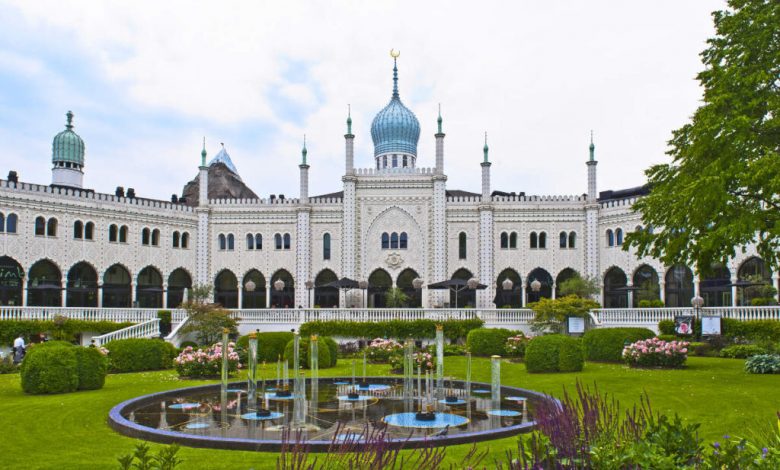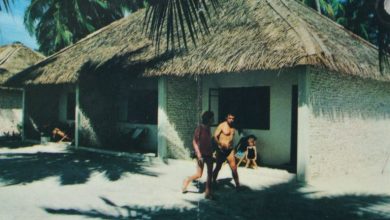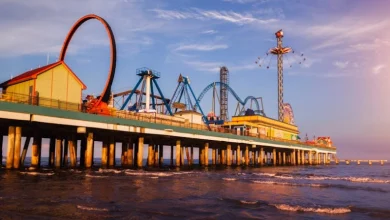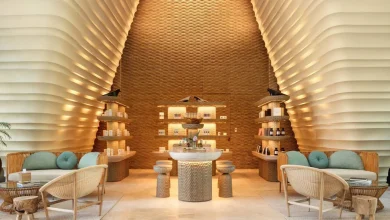
Copenhagen, the capital of Denmark, is a city where history and modernity blend seamlessly, offering a unique Danish experience. Known for its rich cultural heritage and innovative design, Copenhagen is a perfect destination for those seeking both historical sites and modern attractions. This city guide highlights what makes Copenhagen special, ensuring a memorable visit to Copenhagen.
Must-See Attractions and Hidden Gems
Nyhavn stands as Copenhagen’s most photographed landmark, where colorful 17th-century townhouses line a picturesque canal. Once a bustling commercial port, it’s now home to charming restaurants and cafés where Hans Christian Andersen once lived and wrote.
Tivoli Gardens offers enchanting experiences year-round as one of the world’s oldest amusement parks. Beyond thrilling rides, visitors discover beautiful gardens, open-air concerts, and seasonal celebrations that capture the Danish spirit of celebration.


The Little Mermaid Statue pays homage to Andersen’s beloved fairy tale. While modest in size, this bronze sculpture represents Copenhagen’s literary heritage and offers scenic harbor views.
Rosenborg Castle houses the Danish Crown Jewels and provides insight into royal history through its Renaissance architecture and meticulously preserved rooms showcasing four centuries of Danish monarchy.


Christiansborg Palace serves as the seat of Danish government while offering public access to royal reception rooms, ruins beneath the palace, and tower views over the city.




Things to do in Copenhagen
Outdoor Activities and Parks
Copenhagen offers a plethora of outdoor activities, including exploring its beautiful parks and waterfront areas. Cycling is a quintessential Danish experience. Take a refreshing dip at one of Copenhagen’s beaches, or simply relax and enjoy the cosy atmosphere in one of the city’s many parks. Make sure you visit Copenhagen and immerse yourself in the outdoors.
Cultural Experiences and Museums
Copenhagen is steeped in cultural experiences, with world-class museums and galleries showcasing Danish art and history.
The National Museum of Denmark houses the world’s most comprehensive collection of Danish cultural artifacts. The Viking Age exhibits, including the Gundestrup Cauldron, illuminate pre-Christian Scandinavian civilization. The museum’s ethnological collections demonstrate Denmark’s global cultural connections.


Ny Carlsberg Glyptotek combines ancient Mediterranean art with Danish Golden Age painting. The museum’s winter garden, designed by Hack Kampmann, represents Danish architectural innovation. The collection includes works by Bertel Thorvaldsen, Denmark’s most celebrated sculptor.
The Danish Architecture Centre showcases Denmark’s architectural heritage from medieval timber construction to contemporary sustainable design. Interactive exhibits demonstrate how Danish architecture influences global design trends while maintaining cultural distinctiveness.
Thorvaldsens Museum houses the complete works of Bertel Thorvaldsen, whose neoclassical sculptures influenced European art. The museum building itself, designed by Michael Gottlieb Bindesbøll, represents Danish architectural romanticism.
Historic Neighborhoods: Living Heritage Districts
Indre By (Old Town) encompasses Copenhagen’s medieval heart, where narrow cobblestone streets wind between 17th-century merchant houses. The Latin Quarter surrounding the University of Copenhagen retains its scholarly atmosphere, featuring historic bookshops and centuries-old academic institutions.


Christianshavn offers authentic maritime heritage with its Dutch-inspired canals and historic warehouses. The Church of Our Saviour with its distinctive external spiral staircase provides panoramic views while showcasing baroque religious architecture. This neighborhood’s unique character stems from its 17th-century origins as a planned merchant district.
Frederiksstaden represents 18th-century urban planning at its most sophisticated. This rococo district, centered around Amalienborg Palace, features uniform building heights and harmonious architectural facades that create Copenhagen’s most elegant residential quarter.
Copenhagen´s Food Scene
Copenhagen boasts 17 Michelin-starred restaurants, more per capita than most European cities. Noma, consistently ranked among the world’s best restaurants, revolutionized Nordic cuisine with its innovative approach.
Smørrebrød (open-faced sandwiches) remains Denmark’s culinary signature. Traditional toppings include pickled herring, roast beef, and Danish cheese. Visit Aamanns for modern interpretations or Schønnemann for century-old recipes.


Street food markets like Reffen and Torvehallerne offer diverse international cuisines at reasonable prices. Additionally, these venues showcase Copenhagen’s multicultural dining landscape.
Hygge culture extends to cozy cafés serving exceptional coffee and Danish pastries. Meyers Bageri and Lagkagehuset provide authentic Danish baking experiences.
Copenhagen’s nightlife and Entertainment
Strøget and surrounding streets offer mainstream bars and clubs. Vesterbro provides alternative venues and craft cockteries for discerning nightlife enthusiasts.
Jazz clubs like Jazzhus Montmartre showcase Copenhagen’s rich musical heritage. Additionally, Vega and Loppen host international and local performers regularly.
Theater and opera at the Royal Danish Theatre present world-class performances. English subtitles are often available for international visitors.


Transportation: Navigating with Cultural Awareness
Copenhagen’s public transportation system respects the city’s historic character while providing efficient connectivity. The Metro stations feature contemporary Danish design, with each station showcasing local artistic traditions. The Øresund Bridge connects Copenhagen to Swedish Malmö, representing modern Scandinavian cooperation.
Historic trams still operate on certain routes, preserving transportation heritage while serving practical needs. The harbor buses follow historic shipping routes, offering perspectives on Copenhagen’s maritime development. Route 991 and 992 provide affordable alternatives to expensive boat tours.
Bicycle culture represents living Danish heritage, with dedicated infrastructure reflecting decades of sustainable urban planning. The cycling infrastructure includes dedicated bike lanes, traffic lights, and rental stations throughout the city. Bycyklen provides electric city bikes accessible via smartphone apps.
Copenhagen Card offers unlimited public transport plus free admission to over 80 attractions. This investment pays off quickly, especially for multi-day stays.
Walking tours reveal Copenhagen’s history and culture through expert local guides. Free walking tours operate daily, though tips are appreciated.
Where to Stay in Copenhagen?
Recommended Hotel: Ascot Hotel






For a truly memorable stay in Copenhagen, the Ascot Hotel is highly recommended. This boutique hotel, situated near Tivoli Gardens and the city centre, offers a blend of elegance and comfort. Its prime location makes it easy to explore Copenhagen’s attractions, including Nyhavn and Rosenborg Castle. The Ascot Hotel provides a perfect base for your trip to Copenhagen, offering impeccable service and style.




